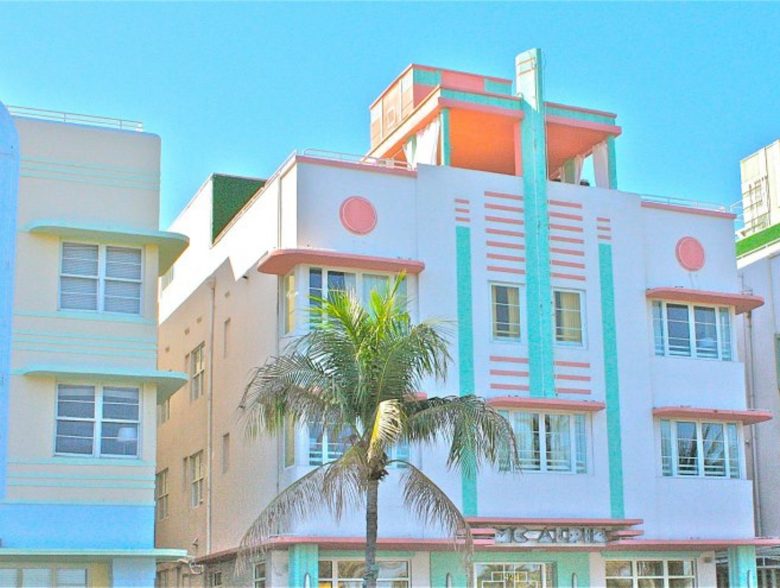The style moderne movement that characterized the roaring 20’s fascination with individuality and absolute luxury forever changed the decorative arts and architecture of numerous cities, among them Miami. The splendor of the revolutionary Art Deco trend was retained at Miami Beach’s Art Deco Historic District where distinguished geometric ornaments and pastel colored 1920’s buildings have been meticulously protected and restored. This neighborhood featuring more than 800 structures from the era of the Arts Décoratifs accentuates Miami’s popular scene with bold neon signs, porthole windows, extravagant facades, and colorful exteriors.
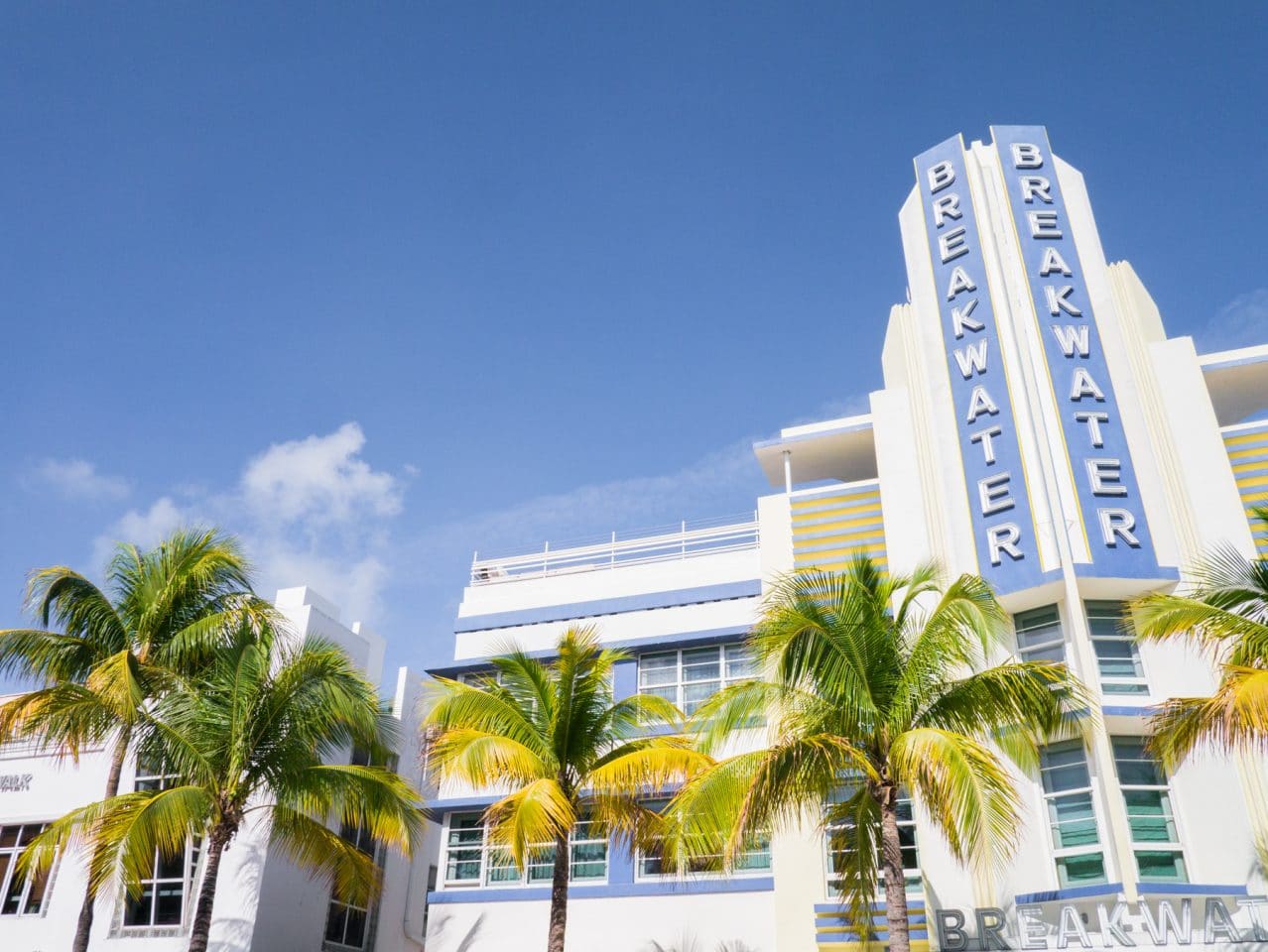
During the day, the laid back structures give off a tropical impression that transports locals and visitors to an epoch grounded on leisure and a deep fascination with modernity. The interiors expand on this allure while emphasizing the use of ornamentation with opulent chandeliers, luxurious rugs, sleek velvet sofas, expansive windows and complex nature-based designs. Meanwhile, by nighttime, the relaxed setting transforms into a hectic and exotic stage illuminated by the bright neon signs spelling the names of hotels such as Park Central Hotel, The Carlyle, Cardozo South Beach and Colony Hotel. People from across the world arrive to immerse themselves in the district’s abundance of tropical colors, theatrical facades, music and historical references that merge with the newest design trends.
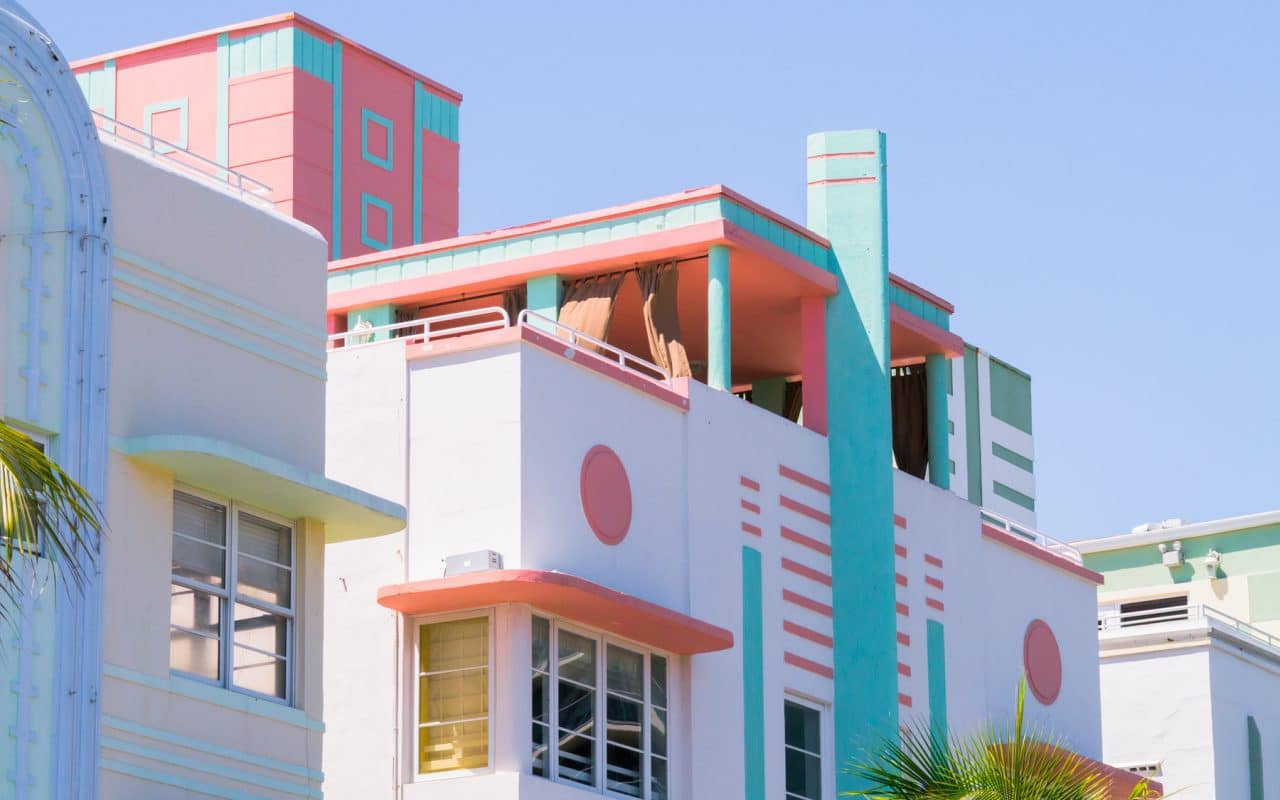
The revival of Art Deco
The Celino South Beach Hotel is the perfect rendition of the modern neoclassic variant of the Art Deco style with a contemporary twist. Its distinguishing features reside in the adventurous use of pastel tones like baby pink, mint green and blue as well as the introduction of lavish decorations comprising lush carpets, tropical indoor plants, extravagant lighting and grand wall décor. The lobby itself welcomes visitors into its stylish ambience accentuated with various shades of pink, metallic finishes, graphic prints, wavelike ceiling décor, sleek furniture in ample sizes and extensive murals with nature-inspired themes.
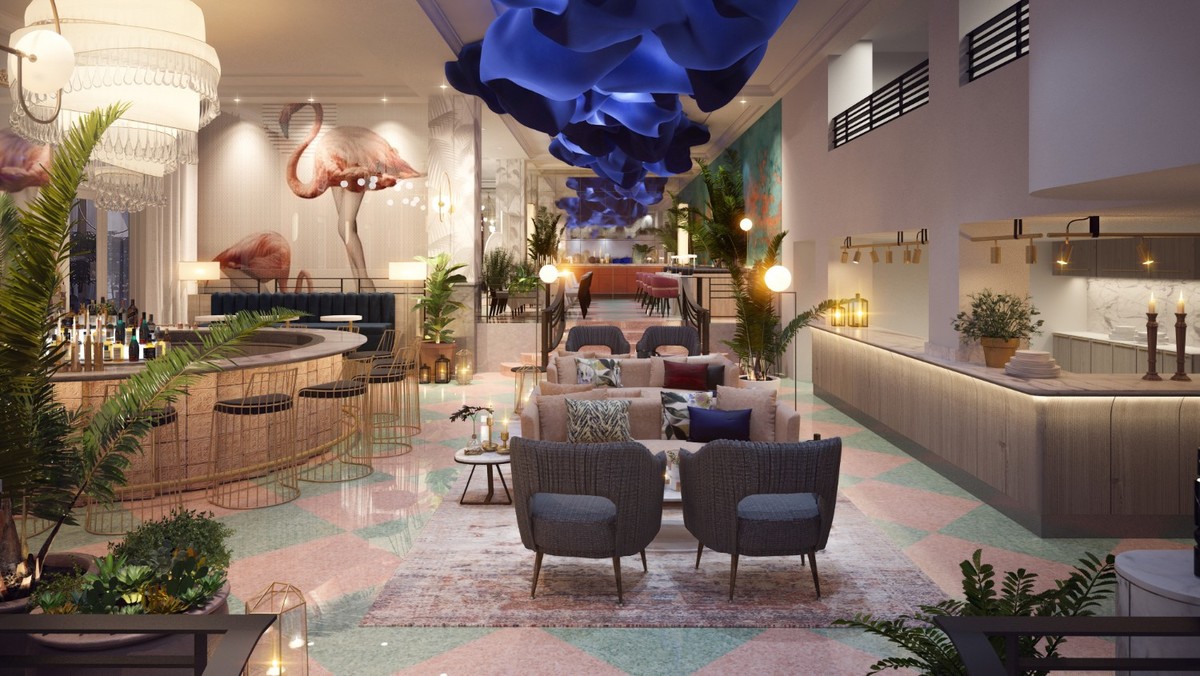
With the addition of 132 new rooms in 2019, the boutique hotel also incorporated a more modern and playful aspect to the original Art Deco style. Taking up a minimalist twist each room features lighter and neutral tones, clean furniture designs, and bold minimal artwork. More than a blend of styles, the Celino South Beach’s interiors display an expansion of the original Art Deco movement and its evolution in the contemporary design scene.
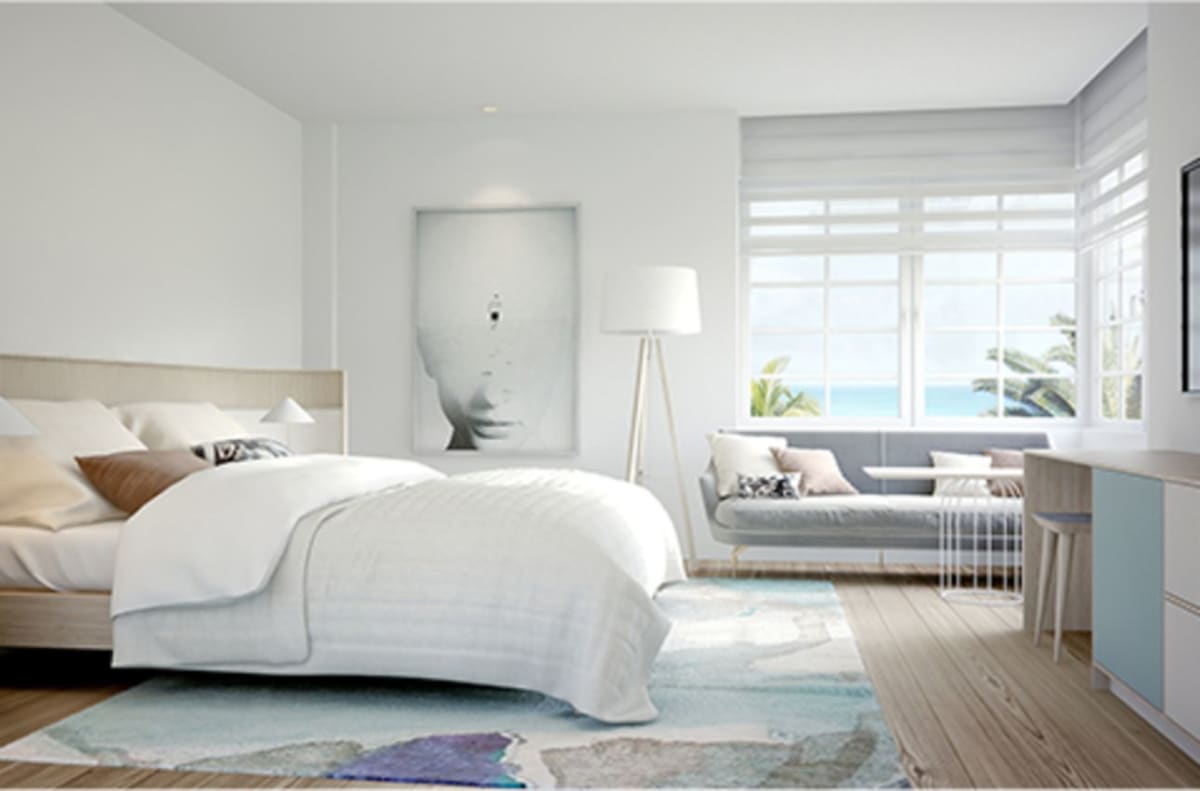
The symbolic Colony Hotel
Since its development in 1935 during the revival of Miami’s Art Deco cityscape, the Colony Hotel became a steadfast symbol of the era’s modern neoclassical style. With a simple and geometrical façade, symmetrical design and a bold neon sign following the shape of an inverted T, the building is an exemplary part of the different works that brought forth the architectural renaissance of Art Deco in the famous Ocean Drive. Within the buzzing streets of this neighborhood, the straightforward exterior of the hotel invites visitors to its relaxed and playful interiors with direct beachfront access.
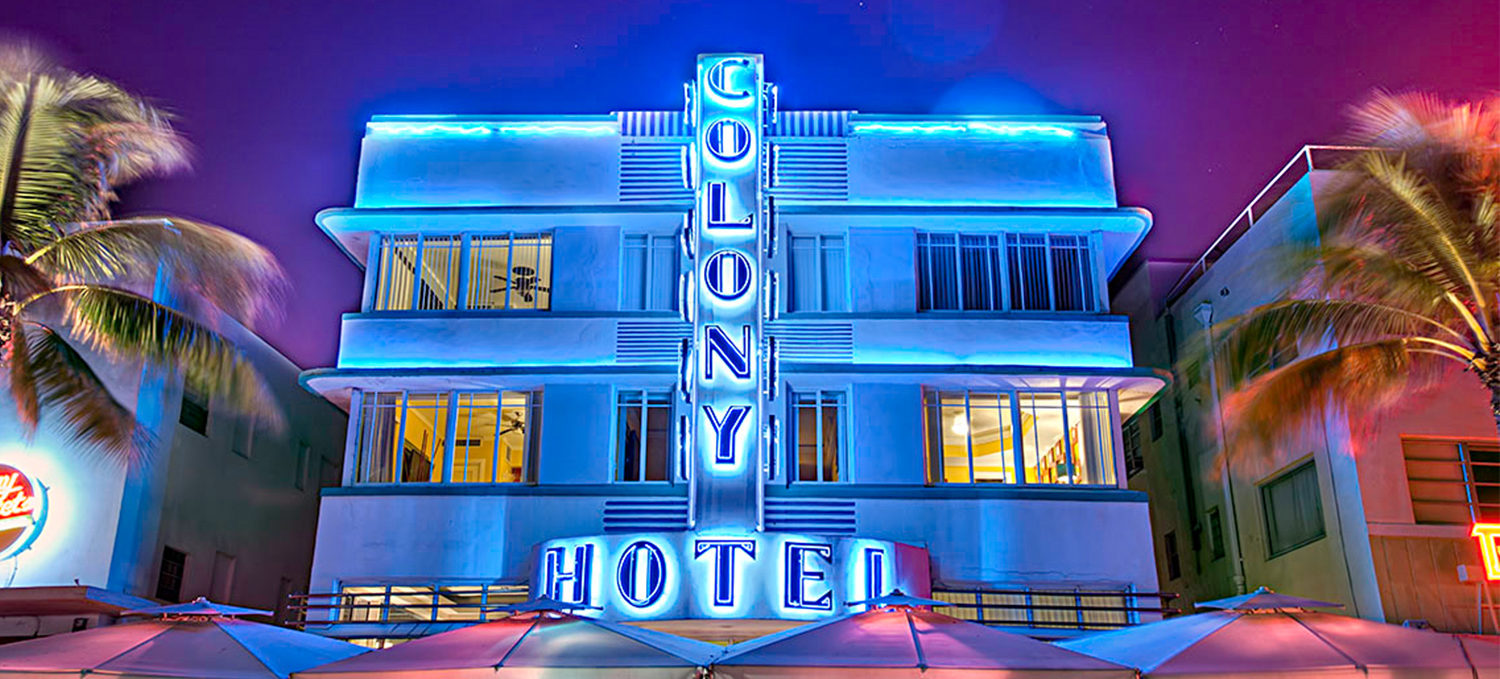
The rooms at the Colony Hotel pay tribute to the classic Art Deco style while highlighting the charm of its modern custom furniture, floral decorations, contemporary lighting and color themed rooms featuring olive green tones, pale blue, or a neutral palette of white and grey. Despite the rootedness of the building’s exterior in the traditional style moderne, the interiors upgrade this historical reference with an original touch. This occurs through the European style approach geared towards the emphasis on details such as the pine wooden floors, quality continental bedding and linen, and the use of texture over furniture and walls with wooden frames or mosaic surfaces. With interiors such as these and an unchanging façade, the Colony Hotel is indeed a historical treasure adapted to the present standards.
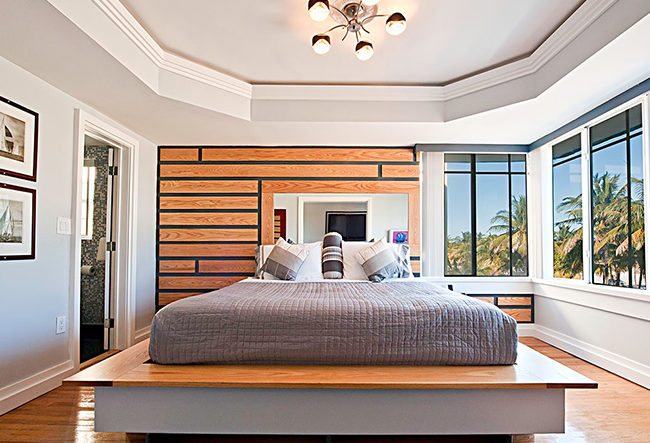
The maximalist décor of The Villa, Casa Casuarina
The historical luxury boutique villa that embodies the imagined sophistication of the world presented in The Great Gatsby, encapsulates the extravagance of the roaring 20’s within its richly decorated walls. Previously owned by the renown fashion designer, Gianni Versace, this hotel, restaurant and event site features not only the grandeur of the Art Deco era but also aspects of modern design’s history. From the bronze Kneeling Aphrodite statue to the Medusa medallion and the antique French fountain, every surface is imbued with symbolism and classical glamour.
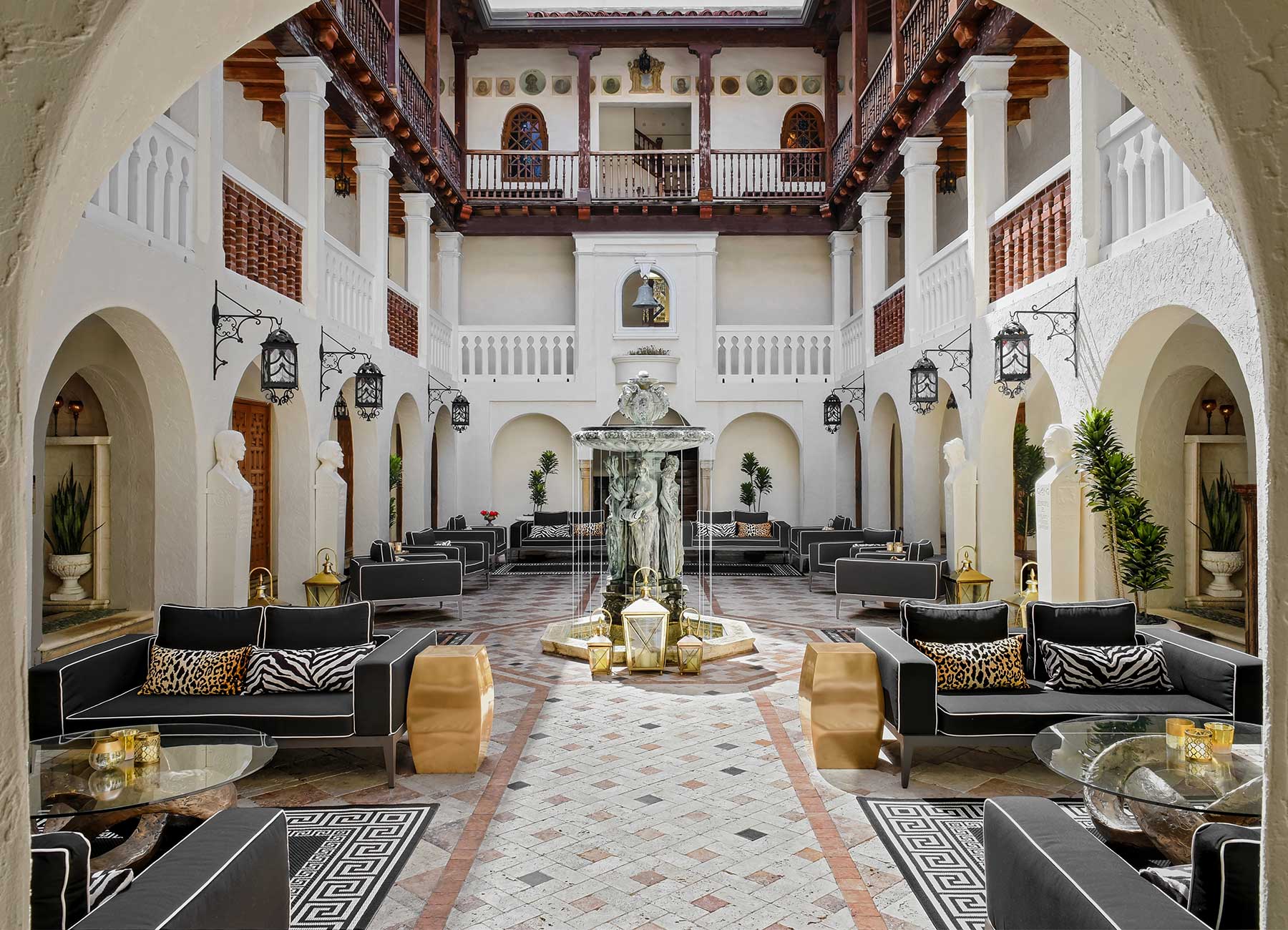
The overall composition follows a neoclassical style imbued with romanticism and the splendor that characterized Versace’s tastes. Each room is covered in rich fabrics with floral patterns, walls with painted murals of idyllic natural landscapes, marble floors inspired by ancient Greek and Roman temples, and even windows and doors are covered by abundant wooden frames. The effect is like stepping into a royal suite with extensive balconies overlooking the villa’s garden and neighborhood, oversized beds and plush furniture within a topical oasis frozen in time.
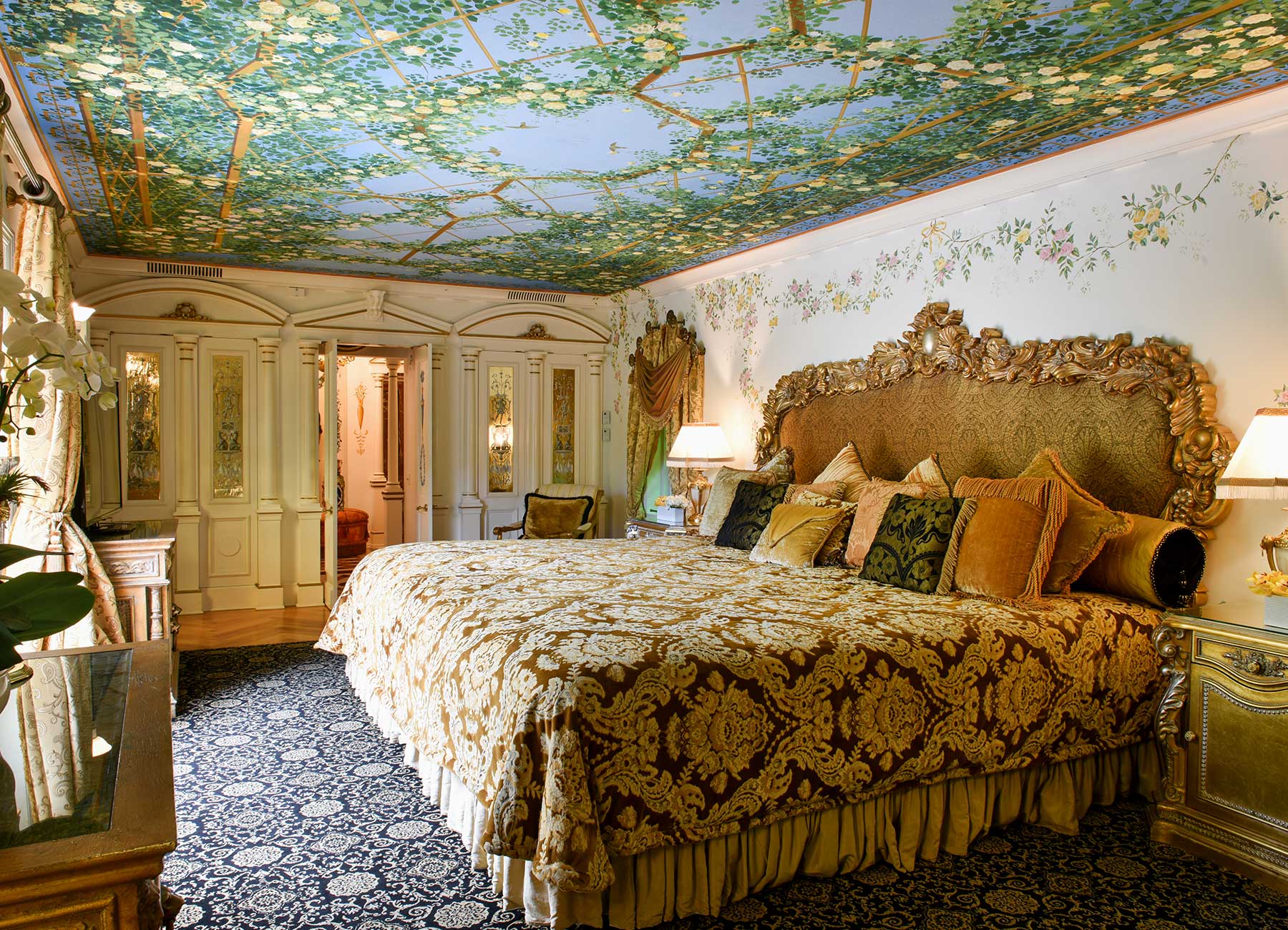
If you wish to discover more about the Art Deco movement that continues to captivate artists, architects and designers to this day, the best way to learn is through first-hand experience. Miami’s Art Deco Historic District allows you to step into the animated, extravagant and carefree world of the monumental Deco era to admire the historical remnants of past architecture mixed with contemporary designs that imbue new meaning to the buildings that characterize this popular district.

